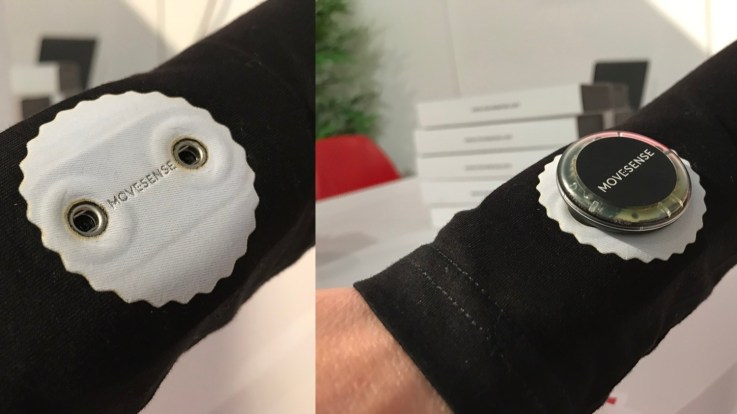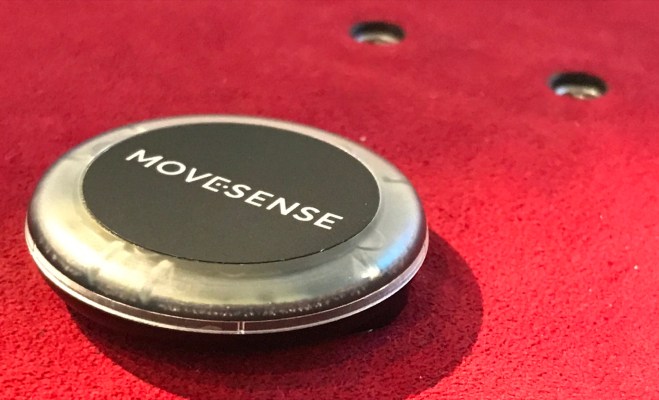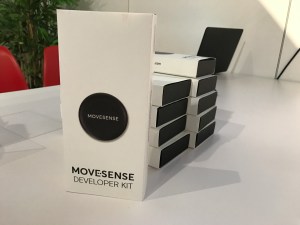Developing a fitness tracker from scratch is is a legitimately hard challenge. Design, sourcing, miniaturization and manufacturing is all ludicrously complicated, and often isn’t core to the functionality of a fitness tracker.
Suunto — the Finnish company known for their fitness, diving and navigational products — has shoved the sensors from its heart rate tracking strap into a developer-friendly package. Dubbed Movesense, it is designed to empower the next generation of fitness tracker creators to get started.

For demo purposes, the team had a high five sensor, to be worn on the wrist, embedded into a long-sleeve shirt. You know, for those situations where it’s imperative to know how many high fives you’ve given in a day. Personally, I try to aim for 12,000 steps and 12 high fives per day.
The Movesense developer kit will be seeded to 50 developers who have cool ideas for the product, and will be available to buy for €100 (around $105). The company isn’t revealing the final price for bulk orders of the device yet, but does suggest that they’ll be available to purchase in any quantity.
Obviously, the advantage of working with Suunto’s well-established production pipeline means that the hardware challenge is taken out of the mix, and that aspiring wearables developers can focus on writing the software, apps and integrations that make the product work, rather than having to worry about the device on a circuit-board level.
“At Suunto, we build a number of different trackers,” Anna de Torres, Partnerships Manager at Suunto told me, “We recognize that there are a number of trackers that might be useful, but that nobody is selling. With Movesense, we are making the technology available to anybody with a good idea and some coding skills.”
The tracker itself is waterproof, and should survive a round or two in the washing machine (although the company hastens to add that they don’t recommend washing the device), which is helpful for a device that could potentially be embedded in clothing.
The new sensor is only 1.44 inches in diameter (36.6mm), weighs 0.35 oz (10g), and connects to any number of things, including clothes, shoes and sports equipment. The sensors connect with a stud system, meaning they can easily be taken off or moved to other equipment for other activities. Imagine keeping one on your bike pedal to measure pedaling cadence, moving it to your kayaking oar for measuring paddling cadence, and finally sticking it on your shoe for measuring a run, for example. The sensor is aware of the ID of the item it is attached to, so the same sensor can be used to measure a number of different things automatically.
Finally, the sensor has memory built in, which means there’s no need to carry a phone around to capture the data — it can be synced across at a later time.

